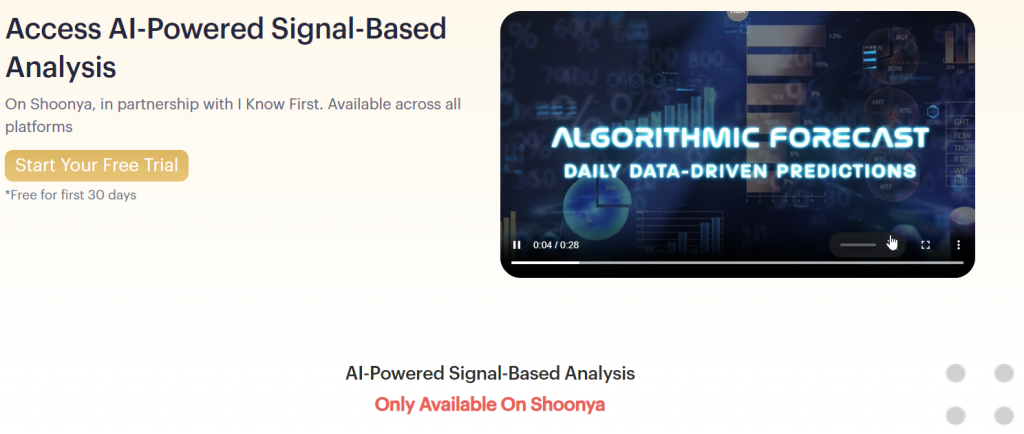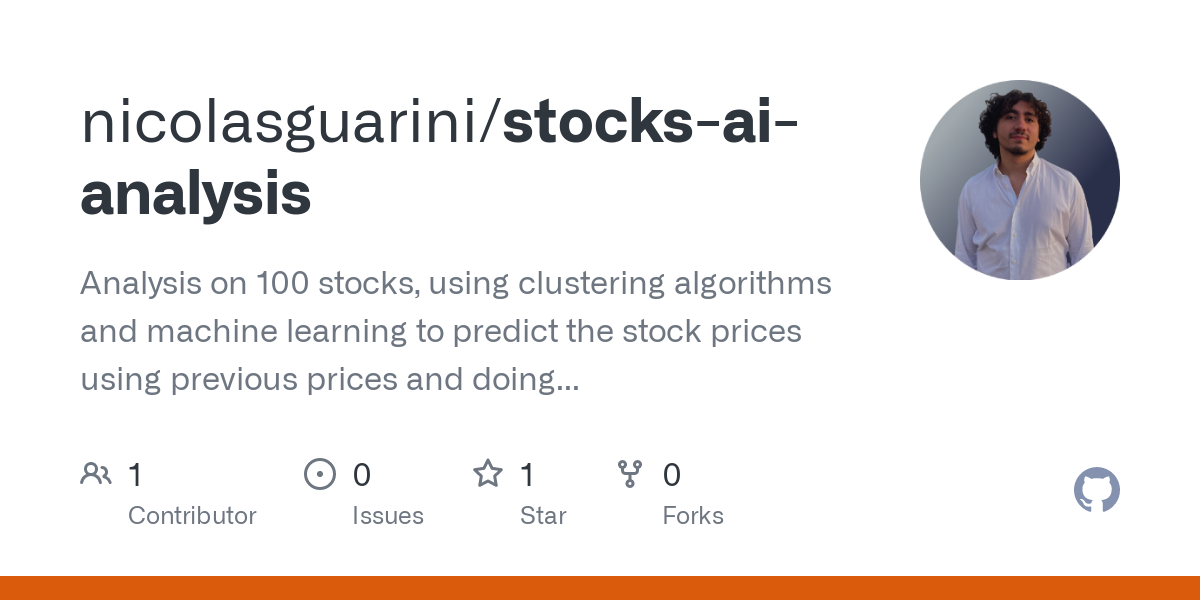Top 10 Tips To Choosing The Best Ai Platform For Ai Stock Trading, From Penny To copyright
The choice of the ideal AI platform for trading stocks regardless of whether it is the penny stock market or in copyright, is crucial for success. Here are ten suggestions to help you when making a choice.
1. Define your Trading Goals
Tip: Determine your focus -whether it’s penny stocks, copyright, or both. Then, specify if you are seeking a long-term investment, short-term trading, or automated algorithms.
Why platforms excel in specific areas. A clear understanding of the goals can help you select the best platform to meet your needs.
2. Assess Predictive Accuracy
Verify the platform’s accuracy in the prediction of.
Examine the credibility of the company through the reviews of customers, backtests published by publishers or results from demo trading.
3. Real-Time Data Integration
Tips – Make sure the platform is able to provide live feeds of market data especially for the asset classes such as penny stocks and copyright.
The delay in data could result in missed opportunities or poor execution of trades.
4. Customization
TIP: Pick platforms that allow custom strategies as well as indicators, parameters, and parameters that are suited to your trading style.
Examples: Platforms like QuantConnect or Alpaca permit extensive customisation by tech-savvy customers.
5. Focus on Automation Features
Tip: Look for AI platforms that have powerful automated capabilities, such as stop-loss, take-profit and trailing stop features.
Automating saves time and allows traders to execute trades with precision, especially in volatile markets.
6. Assessing Sentiment Analyzing Tools
TIP: Find platforms with AI-driven emotions analysis, especially if trade in penny or copyright stocks. These are often affected by news and social media.
Why: The market sentiment plays a key role in short-term price changes.
7. Make sure that the user experience is easy to use
Tip: Check that the platform is user-friendly interface and clear documentation.
Reason: A steep and steep learning slope can hinder your ability to trade.
8. Examine for Compliance
Tip: See whether the platform is compliant to the rules of trading in your area.
copyright Find features that support KYC/AML.
If you are investing in penny stocks, be sure you adhere to the guidelines of the SEC.
9. Cost Structure Evaluation
Tip: Understand the platform’s pricing–subscription fees, commissions, or hidden costs.
The reason: A costly platform can reduce the profits of a company, particularly for penny stocks and copyright.
10. Test via Demo Accounts
Use the trial account or demo account to test the waters of the system before you put it to use the real money.
The reason: A test run will reveal if the platform meets your expectations regarding functionality and performance.
Bonus: Make sure to check out Customer Support and Community
Tips: Choose platforms that have active communities and a strong level of support.
What’s the reason? The advice of peers and solid support can help troubleshoot problems and refine your strategy.
Find the best platform for your trading style by carefully evaluating platforms according to these standards. Take a look at the most popular free ai trading bot info for more examples including best ai for stock trading, ai investing, ai stocks, trading bots for stocks, ai for trading, ai financial advisor, free ai tool for stock market india, best stock analysis website, ai for trading, ai trading platform and more.

Top 10 Tips For Monitoring The Market’s Tempers Using Ai For Stock Pickers, Predictions, As Well As Investments
Monitoring the market’s sentiment is an essential aspect of AI-driven stock picking investment predictions, forecasts, and other investments. Market sentiment is an influential factor that can influence stock prices, and the overall trend of the market. AI-powered software is able to analyze massive amounts of data and extract sentiment signals. Here are ten suggestions to assist you in using AI to pick stocks:
1. Utilize Natural Language Processing (NLP) for Sentiment Analysis
Tips: Make use of Artificial Intelligence-driven Natural language Processing (NLP) techniques to study texts from news articles as well as financial blogs, earnings reports and social media platforms (e.g., Twitter, Reddit) to gauge sentiment.
Why is that? NLP lets AIs comprehend and quantify feelings, opinions, and sentiment expressed in unstructured documents, which allows real-time decision-making in trading using sentiment analysis.
2. Monitor Social Media and News for Real-Time Sentiment Signals
Tip: Use AI algorithms to extract data from real-time social media platforms, news platforms, and forums to monitor the changes in sentiment that are related to stock or market events.
What’s the reason? Social networks and news are powerful influences on the markets particularly volatile assets. Trading decisions that are made in real-time can benefit from analyzing the sentiment of markets in real time.
3. Machine Learning and Sentiment Analysis: Integrate the Two
Tip : You can use machine learning algorithms to predict the future developments of market sentiment based on the historical information, signals of sentiment and price fluctuations (e.g. linked to social media or news).
The reason: AI is able to predict price fluctuations by analyzing patterns in sentiment data. It also can predict the historical performance of stocks.
4. Combining Sentiment and Technical and Fundamental Data
Tip : Use traditional technical indicators such as moving averages (e.g. RSI), as well as essential metrics like P/E or earnings reports to build an investment strategy that is more complete.
The reason: Sentiment is an additional layer of data that can be used to enhance fundamental and technical analysis. Combining all these variables increases AI’s capacity to make accurate and well-balanced predictions.
5. Monitor Changes in Sentiment During Earnings Reports as well as Major Events and Other Important Events
Make use of AI to monitor the shifts in sentiment that happen prior to and/or following major events such as earnings releases, product launch announcements or regulatory changes. These could have significant influences on stock prices.
These events usually trigger significant market changes. AI can detect mood fluctuations quickly, providing investors with insight into the potential for stock movements as a result of these catalysts.
6. Use Sentiment Arrays as a way to Identify Current Market Trends
Tip: Cluster sentiment data to identify general market trends, industries or stocks with a positive or negative outlook.
The reason: Sentiment grouping enables AIs to spot emerging trends not visible from individual stocks or small datasets. This allows them to identify areas or industries with changing investor interest.
7. Utilize sentiment scoring to aid in stock valuation
Tips: Use news forums, social media, or news to analyse sentiments and build scores. Use these scores to sort and classify stocks based on either a positive or negative slant.
What are they? Sentiment scores provide an objective measure to gauge the market mood toward a particular stock, enabling better decision-making. AI can help refine the scores as time passes to increase the accuracy of predictions.
8. Monitor Investor Sentiment across a variety of Platforms
Tip: Monitor sentiment on a variety of platforms (Twitter and financial news websites, Reddit etc.). Check the sentiments across various sources to have a clearer picture.
Why: The opinions on a single platform can be incomplete or skewed. Monitoring the sentiment across multiple platforms ensures an even and precise view of the investor’s attitudes.
9. Detect Sudden Sentiment Shifts Using AI Alerts
Create AI-powered alarms that will notify you of significant shifts in sentiment within a particular stock or sector.
Why: Sudden mood changes like a surge in positive or negative tinged references, can be followed by the rapid movement of prices. AI alerts allow investors to react quickly, and before the market price changes.
10. Examine Long-Term Trends in Sentiment
Tips: Make use of AI analysis to identify long-term sentiment trends, regardless of whether they pertain to particular sectors, stocks or even the market as a whole (e.g. an optimistic or sceptical mood over various durations, such as months or years).
Why: Long term sentiment indicators can reveal stocks with a promising future or early warning signs of emerging risk. This broader outlook complements the short-term mood signals and could guide strategies for the long term.
Bonus: Mix Sentiment with Economic Indicators
TIP: Combine sentiment analysis with macroeconomic indicators like GDP growth, inflation, or employment data to evaluate the impact of economic conditions on the market’s sentiment.
Why: The broader economic situation has an impact on investor sentiment, which in turn impacts stock prices. AI can uncover more information by combining sentiment indicators with economic indicators.
If you follow the suggestions given above, investors can make use of AI to monitor, interpret and forecast the market’s mood. This will enable them to make timely and accurate predictions about investment decisions, and more educated stock choices. Sentiment analyses provide an innovative real-time layer that complements traditional analysis. They help AI stock pickers navigate the complicated market conditions better. Check out the best ai sports betting for site recommendations including ai stock picker, best ai penny stocks, ai stocks, trading ai, ai stock trading bot free, ai for copyright trading, copyright ai bot, best ai penny stocks, ai trading, ai copyright trading and more.
